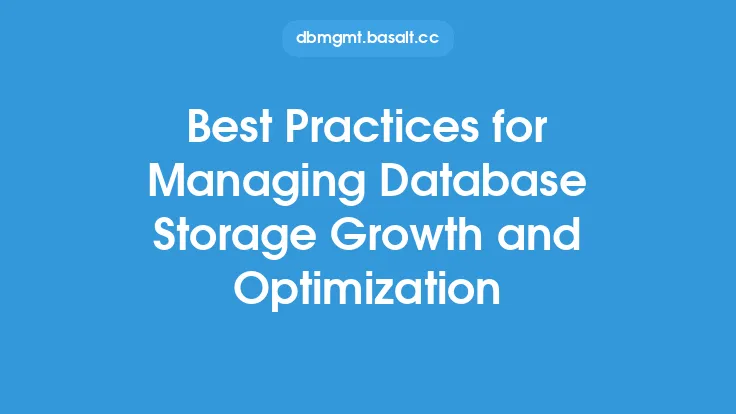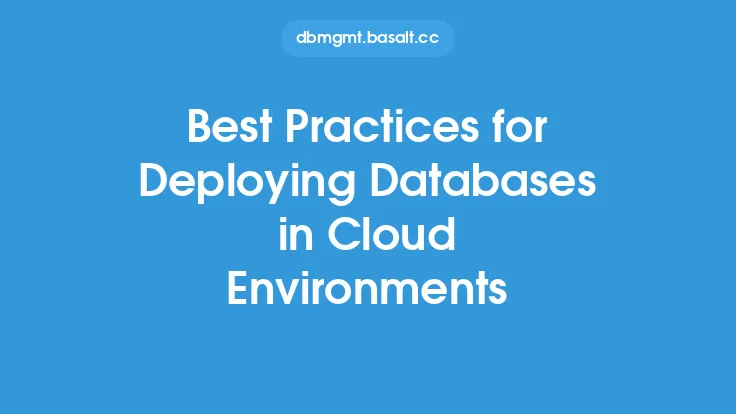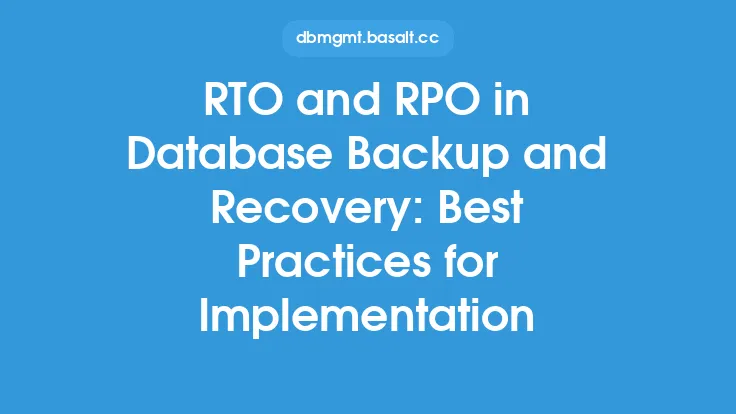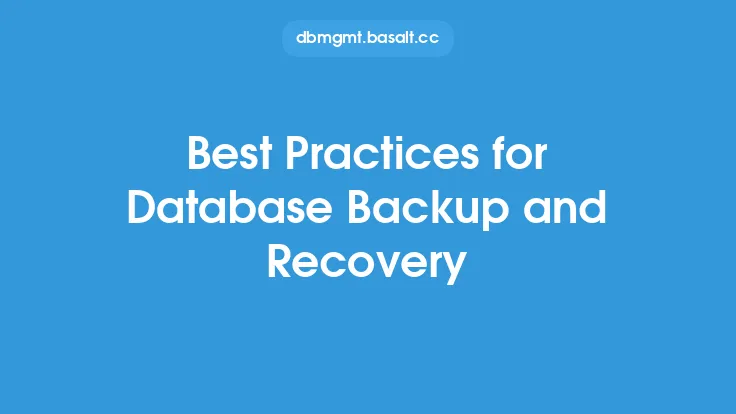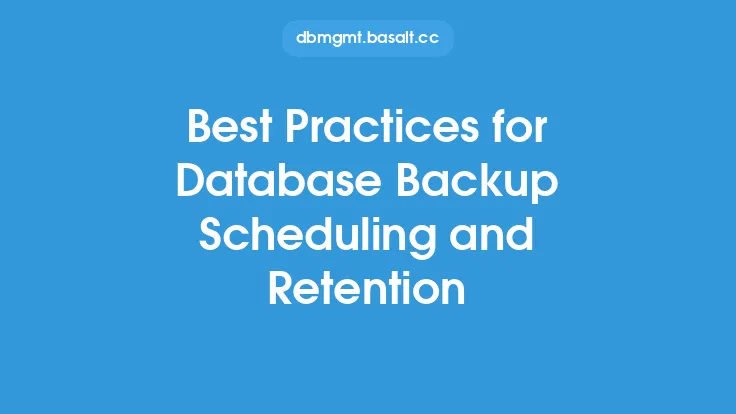Managing backup storage in database environments is a critical aspect of ensuring data integrity, availability, and recoverability. As databases continue to grow in size and complexity, the need for effective backup storage management becomes increasingly important. In this article, we will discuss the best practices for managing backup storage in database environments, focusing on the key principles and techniques that can help organizations optimize their backup storage infrastructure.
Introduction to Backup Storage Management
Backup storage management involves a range of activities, including data backup, storage, and retrieval. The primary goal of backup storage management is to ensure that database backups are properly stored, managed, and retrievable in case of a disaster or data loss. Effective backup storage management requires a deep understanding of database backup and recovery principles, as well as the underlying storage infrastructure. This includes knowledge of storage technologies, such as disk, tape, and cloud storage, as well as backup software and tools.
Assessing Backup Storage Requirements
Before implementing a backup storage solution, it is essential to assess the backup storage requirements of the database environment. This involves evaluating the size of the database, the frequency of backups, and the retention period for backups. Additionally, organizations should consider the recovery time objective (RTO) and recovery point objective (RPO) for their databases, which will help determine the required backup frequency and storage capacity. Assessing backup storage requirements also involves evaluating the storage infrastructure, including the available storage capacity, performance, and connectivity.
Choosing the Right Backup Storage Technology
There are several backup storage technologies available, each with its own strengths and weaknesses. Disk-based backup storage is a popular choice, offering high performance and fast recovery times. Tape-based backup storage, on the other hand, is often used for long-term data retention and archiving. Cloud-based backup storage is also gaining popularity, offering scalability, flexibility, and cost-effectiveness. When choosing a backup storage technology, organizations should consider factors such as storage capacity, performance, scalability, and cost.
Implementing a Backup Storage Strategy
Implementing a backup storage strategy involves several key steps, including defining backup policies, configuring backup jobs, and managing backup storage. Backup policies should be defined based on the assessed backup storage requirements, including the frequency of backups, retention period, and storage capacity. Backup jobs should be configured to run automatically, with options for full, incremental, and differential backups. Managing backup storage involves monitoring storage capacity, performance, and connectivity, as well as ensuring that backups are properly stored and retrievable.
Managing Backup Storage Capacity
Managing backup storage capacity is critical to ensuring that backups are properly stored and retrievable. This involves monitoring storage capacity, identifying capacity bottlenecks, and implementing capacity planning strategies. Capacity planning strategies may include upgrading storage hardware, implementing data deduplication and compression, and optimizing backup storage configurations. Additionally, organizations should consider implementing a storage tiering strategy, which involves assigning different storage tiers to different types of data based on their recovery requirements.
Ensuring Backup Storage Performance
Ensuring backup storage performance is essential to meeting recovery time objectives (RTOs) and recovery point objectives (RPOs). This involves monitoring storage performance, identifying performance bottlenecks, and implementing performance optimization strategies. Performance optimization strategies may include upgrading storage hardware, implementing parallel backup and restore operations, and optimizing backup storage configurations. Additionally, organizations should consider implementing a quality of service (QoS) strategy, which involves assigning different performance levels to different types of data based on their recovery requirements.
Securing Backup Storage
Securing backup storage is critical to protecting sensitive data from unauthorized access and cyber threats. This involves implementing security measures such as encryption, access control, and authentication. Encryption should be used to protect backup data both in transit and at rest, while access control and authentication should be used to restrict access to authorized personnel. Additionally, organizations should consider implementing a secure backup storage protocol, such as SSL/TLS, to protect backup data from eavesdropping and tampering.
Monitoring and Maintaining Backup Storage
Monitoring and maintaining backup storage is essential to ensuring that backups are properly stored and retrievable. This involves monitoring storage capacity, performance, and connectivity, as well as performing regular maintenance tasks such as backup verification and storage cleaning. Backup verification involves verifying the integrity and completeness of backups, while storage cleaning involves removing obsolete and redundant data from the backup storage repository. Additionally, organizations should consider implementing a backup storage reporting and analytics strategy, which involves generating reports and analytics on backup storage usage and performance.
Best Practices for Backup Storage Management
In conclusion, managing backup storage in database environments requires a deep understanding of database backup and recovery principles, as well as the underlying storage infrastructure. By following best practices such as assessing backup storage requirements, choosing the right backup storage technology, implementing a backup storage strategy, managing backup storage capacity, ensuring backup storage performance, securing backup storage, and monitoring and maintaining backup storage, organizations can optimize their backup storage infrastructure and ensure the integrity, availability, and recoverability of their database environments. Additionally, organizations should consider implementing a backup storage governance strategy, which involves defining policies, procedures, and standards for backup storage management, as well as establishing a backup storage management team to oversee and manage the backup storage infrastructure.

